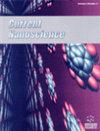自组装纳米颗粒形成衍生物的糊精共轭聚亚胺含有氨基甲酸乙酯键增强传递白介素-12质粒
IF 1.5
4区 材料科学
Q4 BIOTECHNOLOGY & APPLIED MICROBIOLOGY
引用次数: 0
摘要
背景与目的:本研究通过氨基甲酸乙酯单元将低分子量聚乙烯亚胺(LMW PEI, 1.8 kDa PEI)与糊精偶联,并测试其在编码白介素-12 (IL-12)质粒上的转移性。虽然高分子量PEI (HMW PEI, 25kda PEI)已显示出可观的转染效率,但由于其相当大的细胞毒性,阻碍了其广泛应用。因此,我们以具有低毒作用的LMW PEI作为基因转移构建的核心。方法:通过氨基甲酸乙酯单元将LMW PEI与糊精偶联,改善其生物物理特性和细胞毒作用。这些缀合物在缓冲能力、质粒DNA凝聚能力、颗粒大小和zeta电位以及抗酶降解方面进行了表征。体外实验评估了这些LMW PEI偶联物将编码人白细胞介素-12 (hIL- 12)的质粒转移到细胞的能力。采用MTT法测定该偶联物的细胞毒性。结果:我们的研究结果表明,胺含量较高(即共轭度较高)的PEI衍生物具有相当大的缓冲能力和质粒凝聚能力。这些偶联物能以载体与质粒的比值(C/P)≥2凝聚质粒DNA,并在120 ~ 165 nm范围内形成多聚体,zeta电位约为5.5 ~ 8.5 mV。转染效率的结果表明,与未修饰的LMW PEI相比,IL- 12的产量提高了2-3倍,而细胞毒性水平不高于20%。结论:该方法是制备高转染效率、低毒性基因载体的有效途径。本文章由计算机程序翻译,如有差异,请以英文原文为准。
Self-Assembled Nanoparticle-Forming Derivatives of Dextrin-Conjugated Polyethylenimine Containing Urethane Bonds for Enhanced Delivery of Interleukin-12 Plasmid
Background and Objective: In the present investigation, low molecular weight polyethylenimine (LMW PEI, 1.8 kDa PEI) was conjugated to dextrin via urethane units and tested to transfer plasmid encoding interleukin-12 (IL-12) plasmid. Although high molecular weight PEI (HMW PEI, 25 kDa PEI) has shown substantial transfection efficiency, its wide application has been hampered due to considerable cytotoxicity. Therefore, LMW PEI with low toxic effects was used as the core of our gene transfer construct. Methods: LMW PEI was conjugated to dextrin via urethane units to improve its biophysical characteristics as well as cytotoxic effects. The conjugates were characterized in terms of buffering capacity, plasmid DNA condensation ability, particle size, and zeta potential as well as protection against enzymatic degradation. In Vitro experiments were carried out to evaluate the ability of these LMW PEI conjugates to transfer plasmid encoding human interleukin-12 (hIL- 12) to the cells. The MTT assay was performed to measure the cell-induced toxicity of the conjugates. Results: The results of our study demonstrated that the PEI derivatives with higher amounts of amine content (i.e. higher conjugation degrees) have considerable buffering capacity and plasmid condensation ability. These conjugates could condense plasmid DNA at Carrier to Plasmid ratios (C/P) ≥2 and form polyplexes at the size range of 120-165 nm while their zeta potential was around 5.5-8.5 mV. The results of transfection efficiency demonstrated that the level of IL- 12 production increased by 2-3 folds compared with unmodified LMW PEI while the level of cytotoxicity was not higher than 20%. Conclusion: The strategy used in this study shows a promising way to prepare gene carriers with high transfection efficiency and low toxicity.
求助全文
通过发布文献求助,成功后即可免费获取论文全文。
去求助
来源期刊

Current Nanoscience
工程技术-材料科学:综合
CiteScore
3.50
自引率
6.70%
发文量
83
审稿时长
4.4 months
期刊介绍:
Current Nanoscience publishes (a) Authoritative/Mini Reviews, and (b) Original Research and Highlights written by experts covering the most recent advances in nanoscience and nanotechnology. All aspects of the field are represented including nano-structures, nano-bubbles, nano-droplets and nanofluids. Applications of nanoscience in physics, material science, chemistry, synthesis, environmental science, electronics, biomedical nanotechnology, biomedical engineering, biotechnology, medicine and pharmaceuticals are also covered. The journal is essential to all researches involved in nanoscience and its applied and fundamental areas of science, chemistry, physics, material science, engineering and medicine.
Current Nanoscience also welcomes submissions on the following topics of Nanoscience and Nanotechnology:
Nanoelectronics and photonics
Advanced Nanomaterials
Nanofabrication and measurement
Nanobiotechnology and nanomedicine
Nanotechnology for energy
Sensors and actuator
Computational nanoscience and technology.
 求助内容:
求助内容: 应助结果提醒方式:
应助结果提醒方式:


